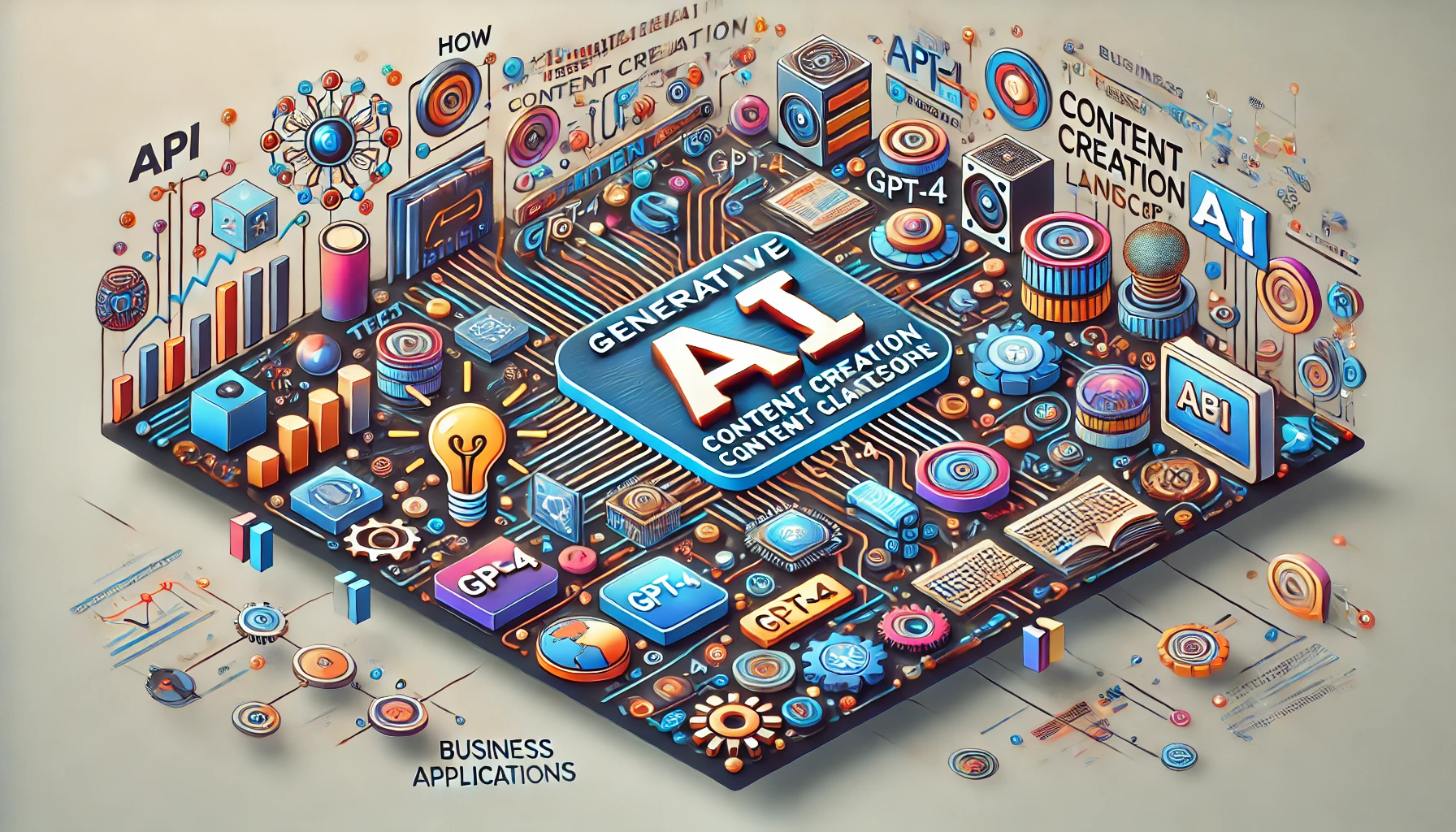How Generative AI is Reshaping the Content Creation Landscape
 Shahriar Rashid
Shahriar Rashid
Generative AI is rapidly transforming the way content is created across industries. From automating tedious writing tasks to generating unique and engaging visual content, these technologies are fundamentally reshaping the content landscape. As we step into 2024, businesses and individuals are increasingly adopting generative AI tools to enhance creativity, streamline workflows, and scale their content production.
In this article, we’ll explore how generative AI works, its applications in various forms of content creation, the benefits it offers, and the challenges that come with it. Finally, we’ll take a look at what the future holds for generative AI in the realm of content production.
What is Generative AI?
Generative AI refers to a subset of artificial intelligence that can produce new and unique content based on patterns in existing data. This technology uses deep learning models, such as neural networks, to learn from vast amounts of information and generate outputs that mimic human creativity. The most prominent examples include GPT-4 for text generation, DALL-E for creating images, and MusicLM for generating music.
These AI models have the ability to create text, images, music, and even videos that are both coherent and contextually relevant. They’re trained on billions of data points, allowing them to understand the intricacies of language, visual design, and other creative elements. Generative AI is now widely used in industries ranging from marketing and advertising to art and entertainment.
Applications of Generative AI in Content Creation
Text Generation: Generative AI models like OpenAI’s GPT-4 are designed to create high-quality text content. They can draft blog posts, product descriptions, social media posts, and even longer-form content like articles and reports. These models analyze a given prompt and produce coherent and contextually accurate responses. For businesses, this means faster content creation and the ability to scale their marketing efforts effortlessly.
Visual Content Creation: AI models like DALL-E and Stable Diffusion are revolutionizing visual content by generating images from textual descriptions. This capability is particularly valuable for graphic designers, marketers, and advertisers who need custom visuals quickly. With these tools, one can create illustrations, design elements, or even concept art that would traditionally take hours to produce.
Multimedia Content: Beyond text and visuals, generative AI is making strides in video and audio content. AI tools like Runway and Synthesia can produce videos using virtual avatars, while models like MusicLM are used to compose music based on given themes. This enables content creators to expand their reach into multiple media formats without needing specialized skills in each area.
Benefits of Using Generative AI for Content Creation
Generative AI offers several advantages to content creators and businesses:
Increased Efficiency and Scalability: AI can automate repetitive and mundane content tasks, allowing writers and creators to focus on strategy and innovation. This leads to faster production and the ability to handle larger volumes of content without compromising quality.
Consistency and Accuracy: Generative AI models produce content that adheres to predefined guidelines and tones, ensuring a consistent voice across all platforms. Additionally, these models are less prone to errors that human writers might overlook, such as grammar and spelling mistakes.
Versatility in Content Types: From blogs and social media posts to videos and music, generative AI can handle a wide range of content formats. This versatility makes it an indispensable tool for creators looking to diversify their content offerings.
Cost-Effectiveness: Hiring human writers, designers, and video creators for large-scale projects can be expensive. Generative AI reduces costs by automating these processes, making high-quality content accessible even to small businesses and startups.
Challenges and Limitations of Generative AI in Content Creation
While generative AI offers numerous benefits, it also comes with certain challenges and limitations that can impact its effectiveness and usability. Understanding these drawbacks is essential for leveraging AI responsibly and ensuring high-quality outcomes.
Lack of True Creativity: Despite its capabilities, generative AI lacks genuine creativity. It produces content based on patterns learned from existing data but cannot create truly novel ideas or concepts like a human can. This makes it challenging for AI to generate original content in niche or highly specialized fields.
Contextual Understanding and Accuracy: AI models sometimes struggle to fully grasp context, leading to inaccuracies or irrelevant outputs. This is especially problematic in complex topics where a deep understanding of the subject matter is crucial. As a result, AI-generated content may require significant human editing to ensure accuracy and relevance.
Bias and Ethical Concerns: AI models are trained on large datasets that may contain inherent biases. As a result, generative AI can inadvertently produce biased or insensitive content. Additionally, there are concerns about the ethical use of AI-generated content, especially in cases where it’s used to mimic human authorship or replace jobs traditionally held by humans.
Dependence on Training Data: The quality of AI-generated content heavily depends on the quality and diversity of the data it was trained on. If the training data is outdated or skewed, the AI's outputs will reflect those limitations, which can affect its applicability in certain contexts.
Legal and Copyright Issues: There is an ongoing debate about the ownership of AI-generated content and the use of copyrighted materials in training datasets. Content creators need to be aware of these legal implications to avoid potential copyright infringements when using generative AI tools.
Despite these challenges, generative AI remains a powerful tool for content creators when used with proper oversight and human intervention.
Future Prospects: How Will Generative AI Evolve in Content Creation?
The future of generative AI in content creation looks promising, with rapid advancements expected in both capability and applicability. Here are some key developments to look forward to:
Improved Contextual Understanding: As AI models continue to evolve, they are expected to improve their ability to understand context, nuance, and human emotion. This would result in more accurate and contextually relevant content, making AI an even more reliable assistant for human creators.
Integration with Augmented Reality (AR) and Virtual Reality (VR): Generative AI could soon play a significant role in producing immersive content for AR and VR environments. This will open up new possibilities for interactive storytelling, digital marketing, and virtual experiences, enhancing the way content is consumed.
AI-Generated Videos and Interactive Media: With advancements in deep learning and computer vision, AI-generated videos are becoming more sophisticated. Future tools might enable creators to produce entire video sequences or interactive media experiences with minimal human input.
Hybrid Models Combining AI and Human Creativity: The future may see a rise in hybrid models that combine AI’s computational power with human creativity. These models would enable creators to harness the best of both worlds, using AI as a tool to augment rather than replace human input.
Ethical and Regulatory Frameworks: As generative AI becomes more prevalent, there will likely be increased focus on establishing ethical guidelines and regulatory frameworks. This will help address concerns around bias, authorship, and content ownership, ensuring responsible and fair use of AI technologies.
By understanding these future trends and preparing for the changes they bring, content creators and businesses can stay ahead of the curve and maximize the potential of generative AI.
Generative AI is revolutionizing the content creation landscape by automating processes, enhancing creativity, and offering unprecedented scalability. Although it comes with its own set of challenges, the potential for growth and innovation is immense. As we move forward, generative AI will continue to play a crucial role in content creation, pushing the boundaries of what’s possible and reshaping the way we produce and consume content.
Whether you're a business looking to streamline your content strategy or an individual creator seeking to explore new creative avenues, generative AI is a tool worth embracing. The key lies in understanding its strengths and limitations and using it to complement, rather than replace, human ingenuity.
Subscribe to my newsletter
Read articles from Shahriar Rashid directly inside your inbox. Subscribe to the newsletter, and don't miss out.
Written by
